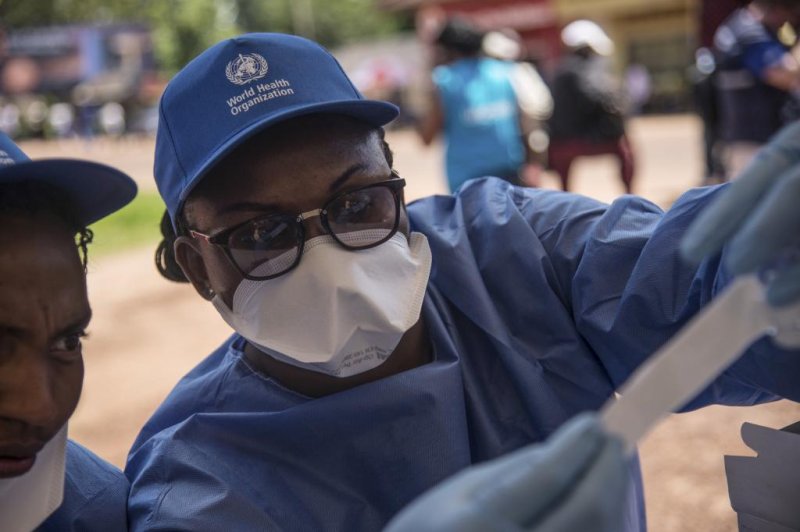A World Health Organization worker prepares to administer an Ebola vaccination in Mbandaka, Democratic Republic of the Congo, on May 21. Photo by EPA-EFE
Jan. 15 (UPI) -- The Ebola epidemic in the Democratic Republic of the Congo has become the second-deadliest in history with more than 600 confirmed cases and more than 300 deaths, international health officials said.
Some 61 percent of the those who've contracted the disease, which was founded in the Congo in 1976, have died, the Congolese health ministry said Monday.
There are also concerns of the outbreak spreading since two of its hardest hit provinces share unsecured borders with South Sudan, Uganda and Rwanda.
"Trends in numbers of new cases occurring reflect the continuation of the outbreak across these geographically dispersed areas, with encouraging declines in case incidence in areas such as Beni," an update report from the World Health Organization said last week. "Hard-earned progress could still be lost from prolonged periods of insecurity hampering containment efforts."
The WHO said there had been 628 cases of Ebola since Jan. 8 and 383 deaths. Health officials said 222 have recovered after treatment at an Ebola treatment center.
The outbreak that spread through several West African nations from 2014 to 2016 still tops the list of the deadliest Ebola outbreak. It affected more than 28,000 people and killed more than 11,000. Eleven were treated in the United States. Some contracted the disease in West Africa before traveling and some medical personnel got it while caring for them, the Centers for Disease Control and Prevention said.
Dr. Thomas Geisbert, an Ebola researcher at the University of Texas Medical Branch, said the difficulty fighting the disease is there are three different strains.
"When an outbreak occurs, we really don't know which one of those three strains, species, we call them, is the cause of that particular episode," Geisbert told Voice of America. "Our goal was to develop a treatment that would work regardless of the particular strain of Ebola that was causing it.
"If I have to make a drug that only works against Zaire, and another drug that only works against Sudan and another drug that only works against the Bundibugyo species, that is extremely expensive."















